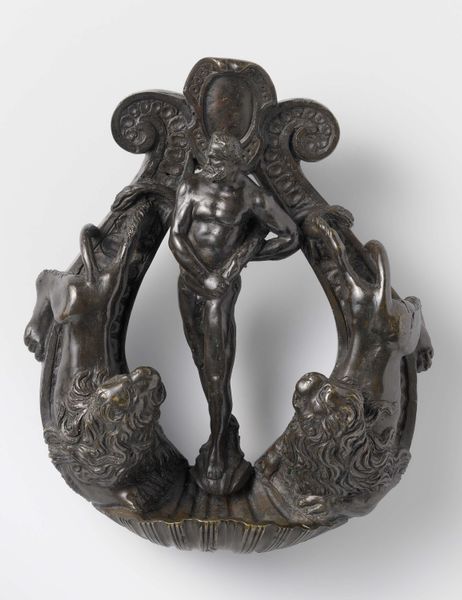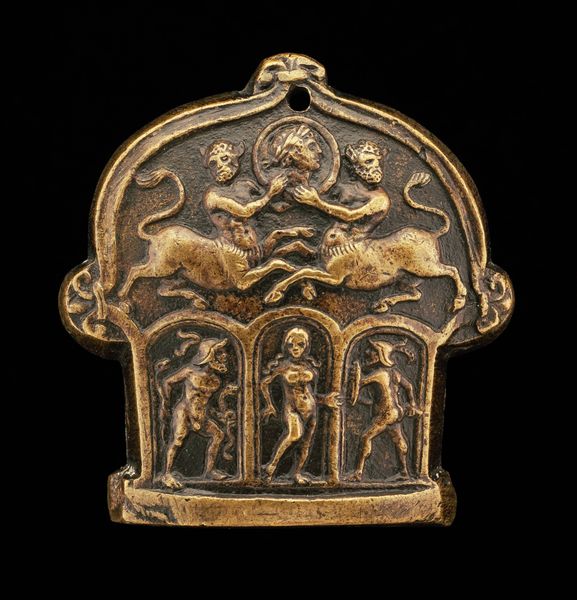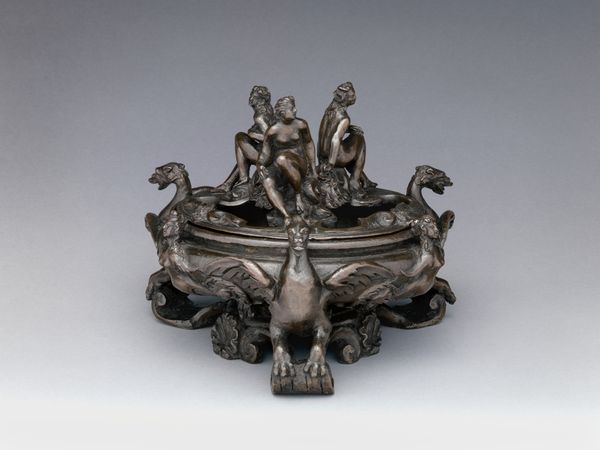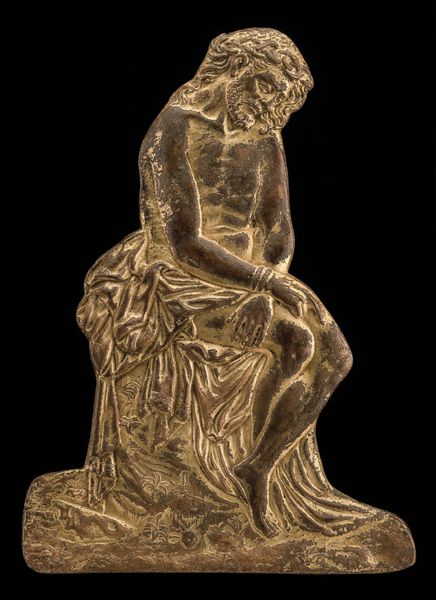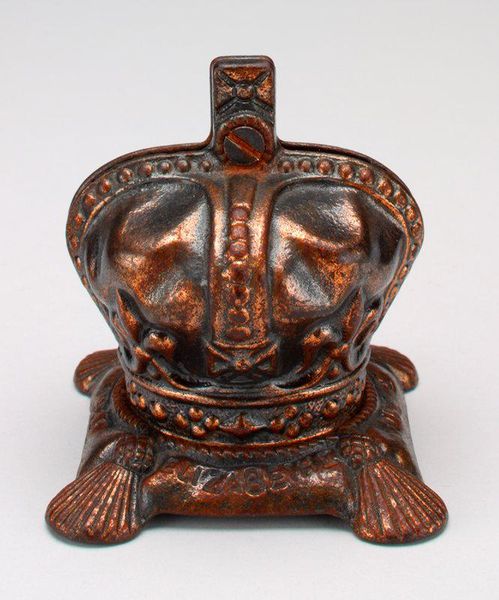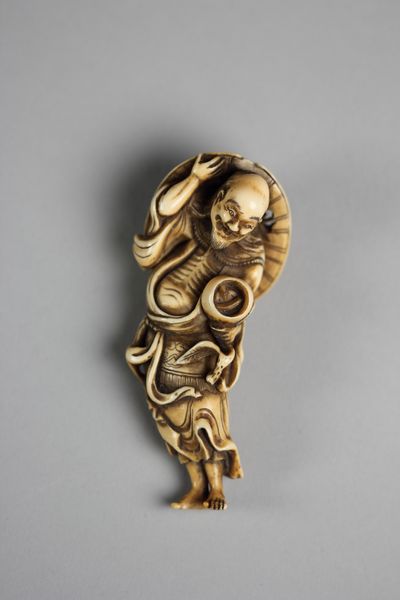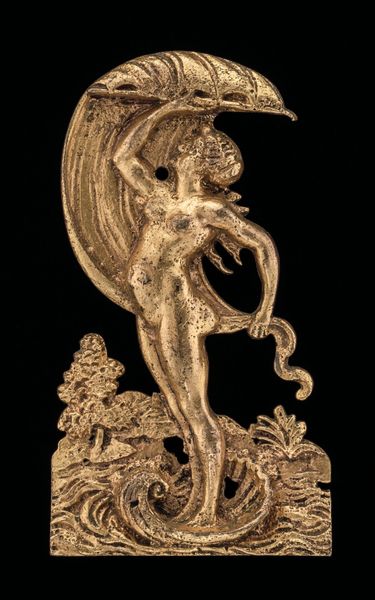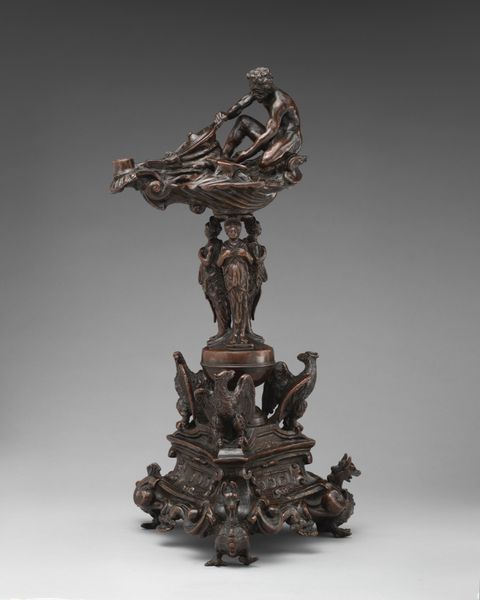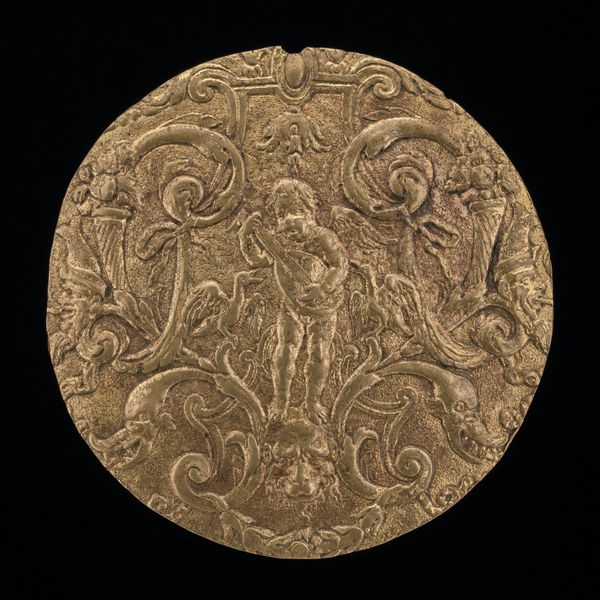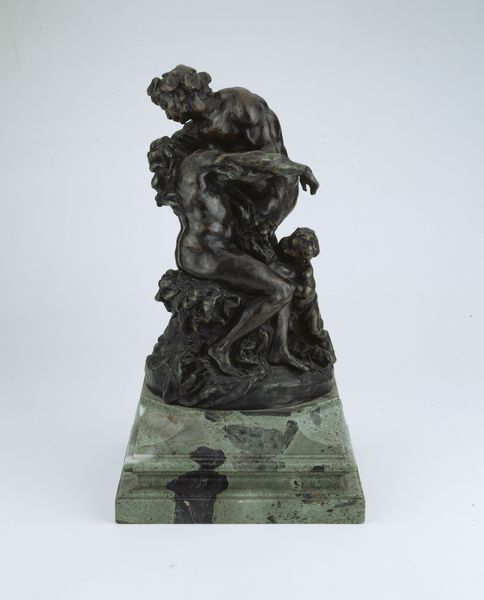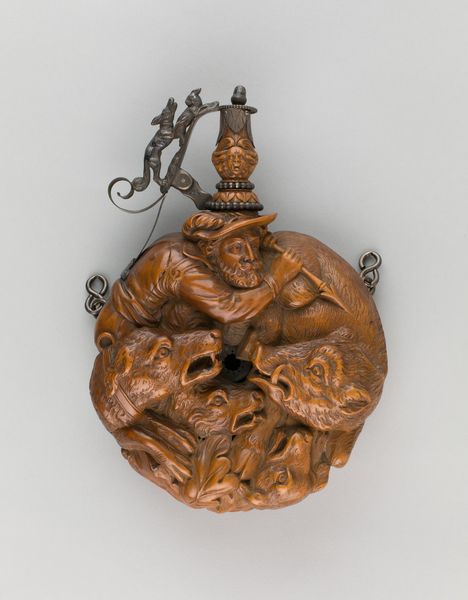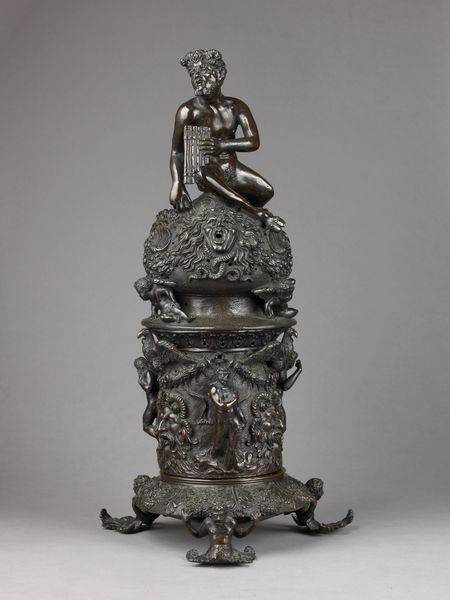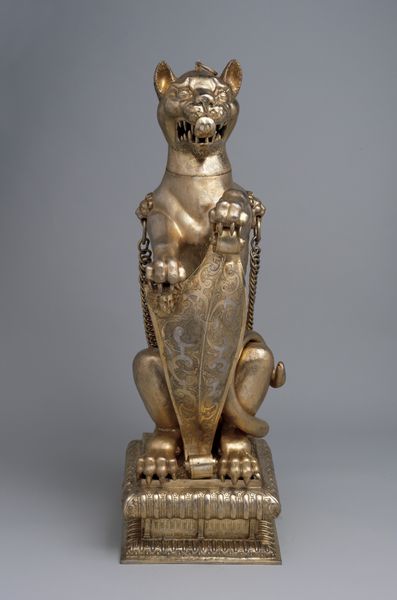
relief, bronze, sculpture
#
medieval
#
narrative-art
#
sculpture
#
relief
#
bronze
#
figuration
#
sculpture
#
history-painting
Dimensions: overall (silhouetted contour): 4 x 4.3 cm (1 9/16 x 1 11/16 in.) gross weight: 18 gr
Copyright: National Gallery of Art: CC0 1.0
Curator: Let's turn our attention now to this intriguing bronze relief sculpture entitled "Lamentation Over the Dead Christ," dating back to around the 16th century and attributed to an anonymous artist. Editor: It’s intensely sorrowful. A compressed little universe of grief rendered in bronze. You immediately sense the weight, not just of the material, but the emotional weight of the scene. Curator: Precisely. The composition adheres to a pyramidal structure, with the Virgin Mary prominently centered, cradling the lifeless body of Christ. Note how the figures surrounding them – each contributing to a complex interplay of anguish – are strategically positioned to emphasize the central lamentation. Editor: Right. I see what you mean by pyramidal – it really does bring your eye to the figures, the Virgin and Christ—they really become the focal point in that solid center. But what is so interesting to me is that these anonymous creators manage to harness intense suffering into such aesthetically appealing forms. It’s this whole paradox of experiencing beauty through tragedy, which seems so strange! Curator: Indeed, the formal restraint allows for a deeply affective experience. And we can also think about what it may have meant at the time. Bronze casting enabled multiple copies for wide distribution, and the use of biblical scenes reflected a need to teach important religious messages in a pictorial way during an era when literacy was rare. Editor: Interesting! This work makes me wonder about what role it once played for people: did it function like a photo of a lost one today, and give a tangible focal point for private grief, and maybe even solace? To hold the little metal sculpture is almost a promise that feelings will not evaporate. Curator: That's an insightful reading. This small bronze condenses centuries of cultural tradition into an intense depiction of loss, which provides tangible access to both devotional practice and artistic legacy. Editor: Yes, it seems to give a permanence to pain and demonstrates that even through immense loss and sorrow, human feelings, and creativity somehow find an enduring form.
Comments
No comments
Be the first to comment and join the conversation on the ultimate creative platform.
